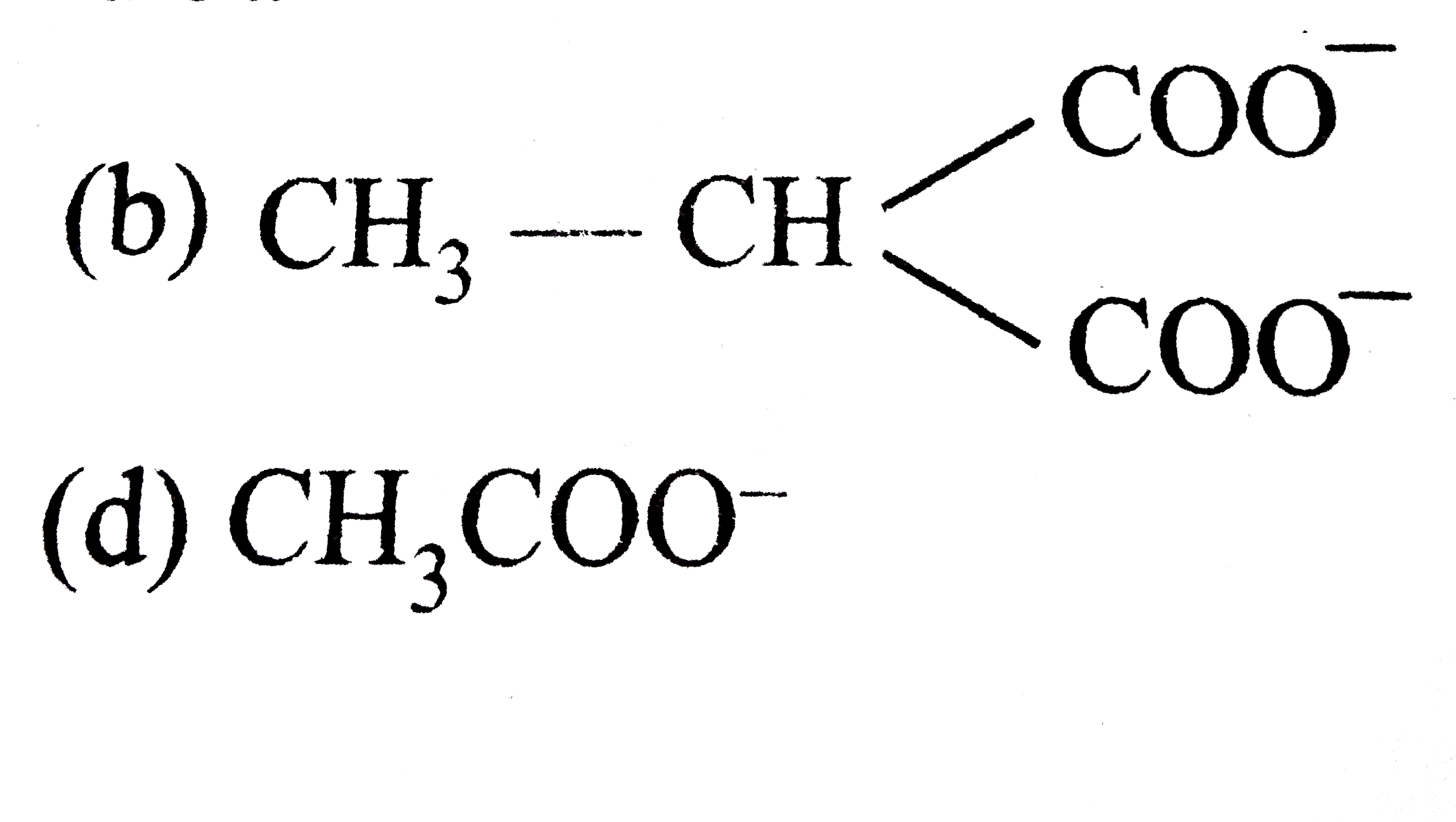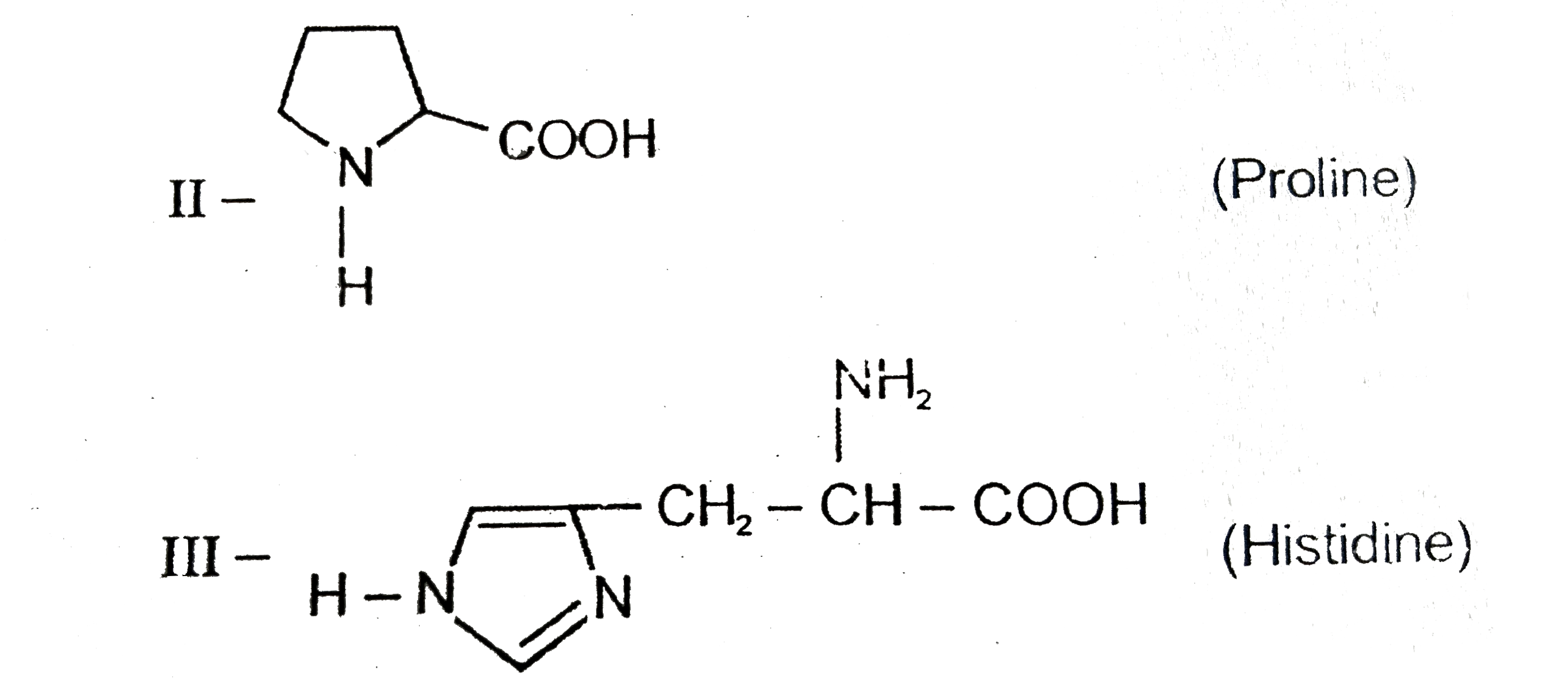+NH3−CH(R)−CO2H has its Ka1=10−7.pKa2 of this is 9.4, t which pH this amino acid will not migrate towards any electrode during electrolysis :
9.4
8.2
7.6
2.4
The correct Answer is:b
Step by step video, text & image solution for overset(+)NH_(3)-CH(R )-CO_(2)H has its Ka_(1)=10^(-7).pKa_(2) of this is 9.4, t which pH this amino acid will not migrate towards any electrode during electrolysis : by Chemistry experts to help you in doubts & scoring excellent marks in Class 12 exams.
Topper's Solved these Questions
- BOOK - GRB PUBLICATIONCHAPTER - BIOMOLECULES, POLYMERS, PRACTICAL ORGANIC CHEMISTRY AND CHEMISTRY IN DAILY LIFEEXERCISE - REASONING TYPE27videos
BIOMOLECULES, POLYMERS, PRACTICAL ORGANIC CHEMISTRY AND CHEMISTRY IN DAILY LIFE
- BOOK - GRB PUBLICATIONCHAPTER - BIOMOLECULES, POLYMERS, PRACTICAL ORGANIC CHEMISTRY AND CHEMISTRY IN DAILY LIFEEXERCISE - MULTIPLE OBJECTIVE TYPE72videos
BIOMOLECULES, POLYMERS, PRACTICAL ORGANIC CHEMISTRY AND CHEMISTRY IN DAILY LIFE
- BOOK - GRB PUBLICATIONCHAPTER - ALCOHOLS AND ETHERSEXERCISE - level 621videos
ALCOHOLS AND ETHERS
- BOOK - GRB PUBLICATIONCHAPTER - CARBOXYLIC ACID AND DERIVATIVES, AMINES AND OTHER NITROGEN COMPOUNDSEXERCISE - Subjective type19videos
CARBOXYLIC ACID AND DERIVATIVES, AMINES AND OTHER NITROGEN COMPOUNDS
Similar Questions
+NH3−CH®−CO2H has its Ka1=10−7. The isoelectric point of the a-amino acid occur at pH = 8.2 hence pKa2 of the conjugate acid of the α -amino acid is equal to X, what will be 10X ?
[Hint : If pka2 is 2.4 write 0024 in OMR sheet]View SolutionGlycine [NH2CH2COOH) is basic and acidic due to presence of −NH2 and −COOH group. It acquires a H⊕ to form ⊕NH3COOH, which is a diprotic acid with K1=4.5510−3 and K2=1.7×10−10. In a 0.01M solution of neutral glycine,
a. What is the pH and
b. What percent of the glycine is in the cationic form at equilibrium?View Solution
Knowledge Check
- Question 1 - Select One
In electric field the pH value at which amino acid doesn't migrate towards any electrode is called
ANeutral pointBAmphoteric pointCIsoelectric pointDAll - Question 2 - Select One
+NH3−CH(R)−CO2H has its Ka1=10−7. The isoelectric point of the a-amino acid occur at pH = 8.2 hence pKa2 of the conjugate acid of the α -amino acid is equal to :
A9.4B1.2C7.6D2.4 - Question 3 - Select One
During electrolysis which anion migrates towards anode so as to produce 2,3−dimethyl butane
ACH3−CH2−COO−B CCH3−C∣CH3HCOO−DCH3COO−
CCH3−C∣CH3HCOO−DCH3COO−
4.0 L of a buffer solution is prepared that is 1.0 M NaH2PO4 and 1.0 M Na2HPO4. The solution is divided into two halves between two compartments of a cell. Using Pt-electrodes, if current of 1.25 amp. Is passed for 200 minutes, pH of anode compartment is approximately: (Assuming only reaction is electrolysis of water)
(Given : pKa1pKa2 and pKa3 of H3PO4 are 3.07, 8.07, 12.07 and log 1.87 = 0.2648 and log 2.16 = 0.344)View SolutionAn amino acid may be represented by general formula H2NR∣CH−COOH. If R=−CH2C6H5 then it is phenylalanine (Phe) and if R=CH3 then it is alanine (Ala). Find the sequence of reagents from those given below to synthesize Phe-Ala.
(1) ZNHCH3∣CHCO2H , (2) H2NCH3∣CHCO2CH2C6H5
(3) ZNHCH2C6H5∣CHCO2H
(4) H2NCH2C6H5∣CHCO2CH2C6H5View SolutionNitrous acid (HNO2) converts amino acids into hydroxy acids with retention of configuration. Estimation of nitrogen gas evolved in the reaction is the basis of Van slyke estimation of amino acids.
R−NH2∣CH−COOHHNO2−−−→R−OH∣CH−COOH+N2↑⏐ ⏐ ⏐⏐+H2O
Which of the following amino acids cannot be analysed by Van slyke method ?
(I) HS−CH2−NH2∣CH−COOH (cysteine)

 View Solution
View SolutionCO2H∣ (CH2)n∣ CO2H, If (n=4) then di-carboxylic acid would be known as:
View SolutionAn α-amino acid exists as, +NH3−C∣RH−COOH at (pH=2) and its isoelectric point is 6. The amino acid at pH 10.97 will exist as :
View Solution

